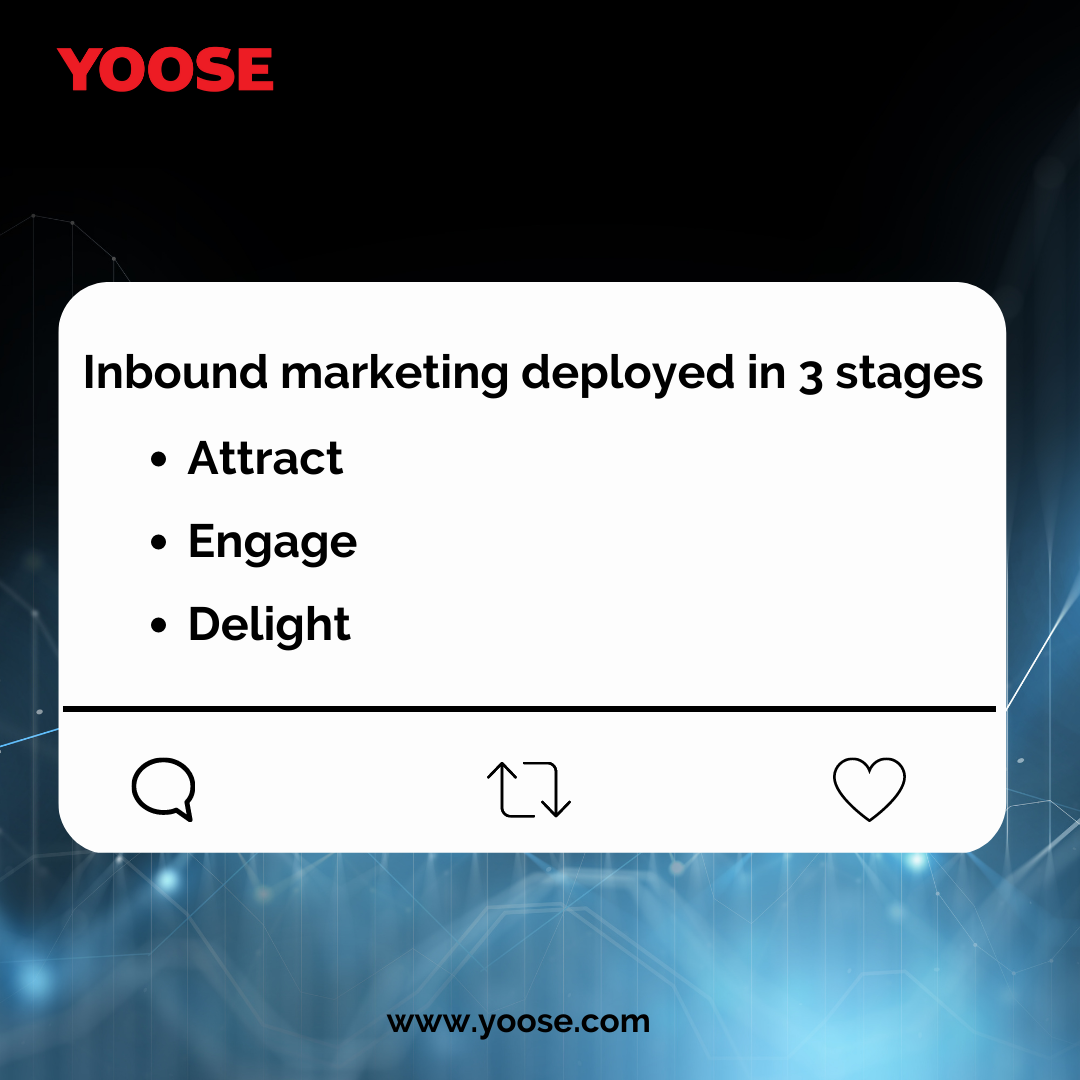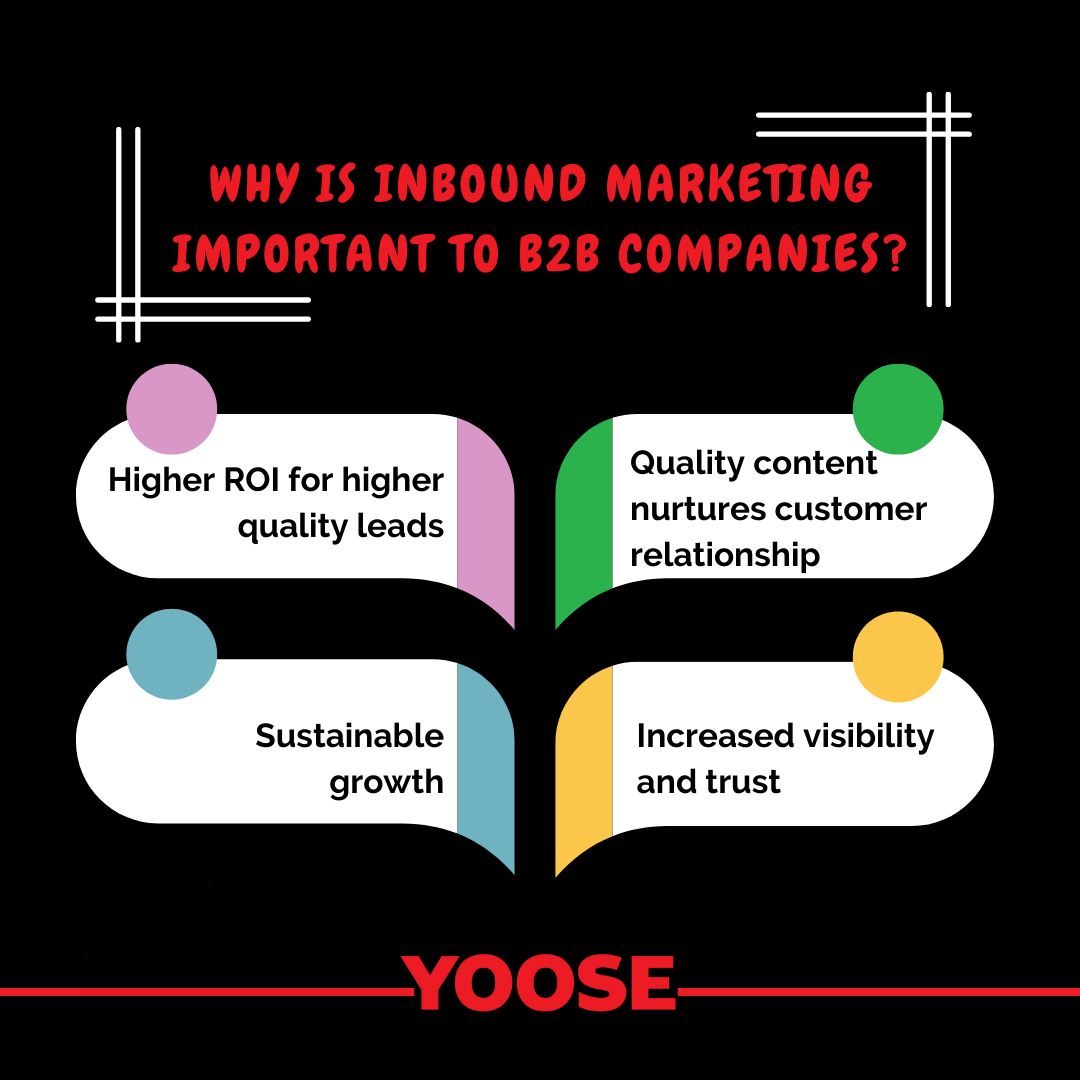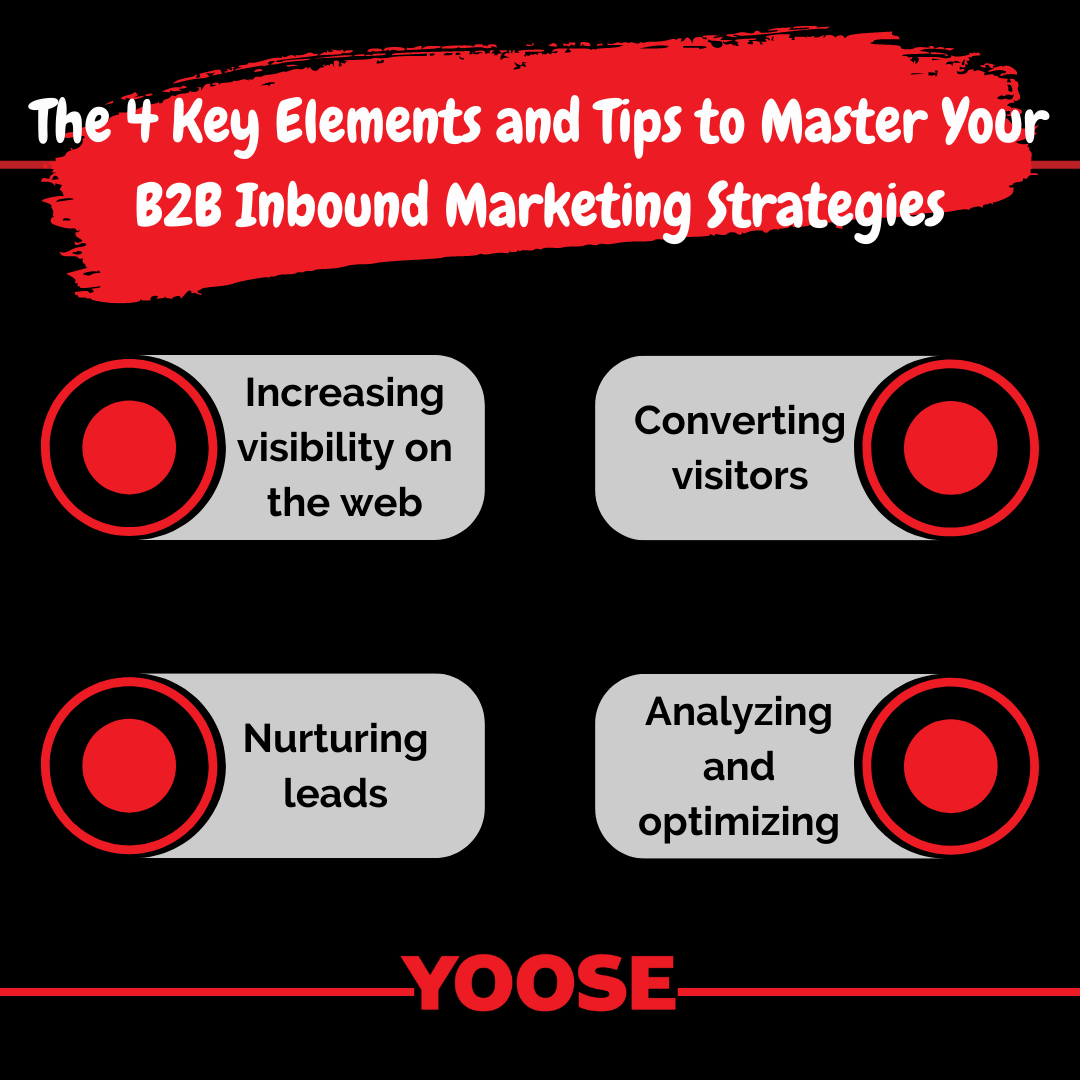4 Key Elements to Optimize your B2B Inbound Marketing Strategies
Inbound marketing is the practice of doing more with less. It's all about engaging customers and prospects directly, learning from what they say, and responding promptly to their needs. In short, it's about understanding who your customers are and delivering a relevant solution for them. This process, which has proven to be highly effective for B2B companies, is becoming increasingly important for people working in all industries as well.
Mastering inbound marketing techniques is the key to sustainable growth and is an essential block of your growth marketing strategy. Find out more about the best practices of Inbound Marketing for B2B companies and how you, too, can make the best use of this methodology for your own business.
What is Inbound Marketing?
Brian Halligan, the co-founder of HubSpot, found out that “No one likes to be interrupted by advertisements and salespeople, they just want to be helped”. This incredible insight led to the founding of HubSpot on the principle of “marketing to people who want to be marketed to” - or Inbound Marketing, as we call it.
Inbound marketing is a business strategy that draws customers by delivering relevant content and experiences that are targeted to their specific needs. While outbound marketing bombards your audience with messages they don't always consent to hear, inbound marketing establishes connections and solves problems customers already have.
The inbound technique focuses on cultivating meaningful, long-term relationships with consumers, prospects, and customers to expand a business. It is about appreciating and empowering these individuals to achieve their objectives at any stage of their journey with the company or product. Inbound marketing has recently placed a big emphasis on improving alignment between marketing and sales teams in order to qualify prospects. Companies that have the most success with inbound marketing are those that united their entire workforce around a common revenue target.
The inbound marketing method can be deployed in three stages:
-
Attract: Attracting the right people by providing high-quality material and engaging in dialogues that identify the company as a trustworthy advisor with whom they’d want to interact.
-
Engage: Providing insights and solutions that address their pain points and aspirations will increase their likelihood of purchasing from you.
-
Delight: Offering assistance and support to help your consumers succeed with their purchases.

Why is Inbound Marketing Important to B2B Companies?
For a B2B company, inbound marketing is infinitely better than outbound strategies. A longer customer journey means there are more steps to take to nurture the relationship between the company and the customers: from strangers to promoters, which can’t be done through advertisements alone. Here are a few reasons why inbound marketing is essential to B2B companies:

Higher ROI for higher-quality leads
A report by Invesp stated that as of 2022, inbound leads cost 61% less than outbound leads, and businesses that make inbound marketing their core strategy save up to $14 per newly acquired customer.
Increasing visitors to your website isn't useful on its own. It is critical that you receive high-quality traffic that generates high-quality leads. High-quality leads are those with the potential to convert. If you only bring in visitors that do not engage with your brand, your efforts will be in vain. Inbound marketing strategies might assist your company in attracting leads with a high conversion rate. This strategy focuses on providing relevant and tailored content that may be used to target consumers who fit your desired customer profile.
Quality content nurtures customer relationship
B2B products and services require a longer decision-making journey because most are big investments. In fact, 80% of business decision-makers prefer to get their information from a series of high-quality web content or blog posts rather than from advertisements. Websites that update blog posts daily also witness a higher lead acquisition rate than those that update weekly or daily.
Sustainable growth
Unlike outbound marketing promotional programs, which are only active for a limited time, inbound marketing is long-term. It is a strategy that does more than just sell a product or service; it also aids in the entire success of your company. And when anything is intended to last a long time, it takes some time to lay the groundwork. Inbound marketing is constructed gradually. It can take time to plan and deploy content, emails, forms, and so on. Determining which channels to use, establishing your email list and social media followers, etc. could also be painstaking. However, all the efforts will pay off in the long run for the company.
Increased visibility and trust
61% of marketers consider increasing organic presence to be the most important goal of their inbound approach (99Firms). It demonstrates that being present on Google search results in pages is a crucial way to establish the company’s visibility and build an immense level of trust. SEO, therefore, is a crucial component of an inbound marketing plan.
For an inbound marketing strategy to work, focus on creating content that will cater to customers’ needs. When a B2B company creates high-quality content that is focused on the wants and concerns of its target audience, its brand's reputation improves. Audiences will regard the company as a reliable source of information, which in turn will help them make decisions faster and even promote the products and services to other people for free.
The 4 Key Elements and Tips to Master Your B2B Inbound Marketing Strategies
If you’re just starting with inbound marketing, the concept might be overwhelming with all the SEO, social media, email marketing, etc. At YOOSE, we break it down to four main aspects for a successful inbound marketing strategy: (1) Increasing visibility on the web, (2) Converting visitors, (3) Nurturing leads, and (4) Analyzing and optimizing.
Increasing visibility on the web
In other words, you need to deploy some action plans to help customers find out about you and your services online. Unlike what you would expect, this stage starts long before your customer does their Google search.
Make sure to include the following key aspects in your inbound marketing strategy:
Set clear objectives and goals
The most effective inbound marketing efforts are those that are strongly connected with an organization's business objectives. Are there strategic or corporate plans that detail marketing and sales objectives? Are they explicit, measurable, attainable, reachable, reasonable, and time-bound (SMART)? This may be the most challenging step, but when done effectively, everything else comes together more quickly.
Create a thorough Buyer Persona
Who is your ideal customer? What "trigger" causes them to begin looking for a solution that your organization might be able to assist with? What do people expect from a company like yours? Why may these buyers refuse to purchase from you? How do they go about investigating and deciding on a solution like yours? Make sure your buyer persona is one or two thoroughly described individuals, not a generic customer profile.
Develop and optimize your website
The website development process has to ensure that your site is easy to access, has a professional appearance, is mobile-ready, search engine friendly, and simple to maintain.
Research your keywords
Keyword research entails determining which terms your buyers use while looking for a solution to a problem that you can solve. Are they distinct from any industry words you may be using? How difficult (competition-wise) is it to rank for these keywords? Do a site-wide SEO audit, optimize your site for those keywords, publish keyword-targeted content on a regular basis, and establish quality links to your website.
Blogging (the more frequent the better)
Blogging entails creating blog articles that are of interest to your target audience (tip: talk about how to solve their problems, not about your company). Blogging generates more pages in search engines, which means more opportunities to be found.
Establish a social media presence
Social networking allows you to establish a following, share your blog entries, and engage in conversations with potential clients. This is an area where social media can significantly improve marketing effectiveness. According to marketing expert Jay Baer, "Content is fire. Social media is gasoline."

Converting visitors
Like supermarkets handing out food samples to generate more sales, your website can also offer premium content to help convert visitors to leads. To do that, you can deploy some of the following tactics:
Provide offers your visitors can’t resist
Offers, often known as "premium content," appeal to customers at all points of their purchasing experience, whether they are just getting started, weighing competitive options, or making a final selection. Ebooks, whitepapers, webinars, tip sheets, and other such items are brilliant examples of offers you can provide today.
Invite them in with a Landing Page and a clear Call-to-Action (CTA)
A call to action (CTA) is a website button, image, or text link that urges a visitor to perform an action by clicking on the button, visiting a landing page, and filling out a form in exchange for some kind of content. A landing page is often more detailed and appealing than a normal blog page and is excellent if you want to get traffic to your website with paid ads.
Nurturing leads
Now that you have leads that actually care about your business, the real work begins. Fortunately, automation software like HubSpot CRM can make this all possible.
Segment leads into manageable groups
You can divide your leads into any number of groups based on what they have downloaded, which pages they visit, and other digital body languages. CRM software by HubSpot is a great tool for you to segment leads more easily and efficiently, by automatically tracking lead behaviors on your pages however you desire.
Nurture leads
Many of your leads will buy, but they may not buy right away. And possibly not from you. Content and context are two of the most potent parts of inbound marketing. You may use lead nurturing to provide your prospects with the correct content at the right time to guide them through the purchasing process.
Lead nurturing techniques may include follow-up email flows, further content down the funnel, customer support, etc., which can all be supported by HubSpot sales and marketing software.
Analyzing and Optimizing
Like any other marketing technique, you need to track your inbound marketing efforts to constantly optimize content and workflow. This feedback gives you the chance to look at your marketing strategy in a data-driven way and help you decide what is working and what isn’t.
Some of the most significant metrics to track in inbound marketing include:
-
Traffic To Leads Ratio
-
Cost Per Lead
-
Leads To Customers Ratio
-
Cost Per Customer
-
CTA performance (A/B Testing)
-
Keyword performance
-
Search rankings
-
etc.
YOOSE and vBase are a proud Gold Partner with HubSpot - the leading software solutions to all your B2B Inbound Marketing needs. If you need help with getting started with your inbound marketing strategies or optimizing your B2B marketing funnel, please don’t hesitate to contact us for a 1:1 consultation.
